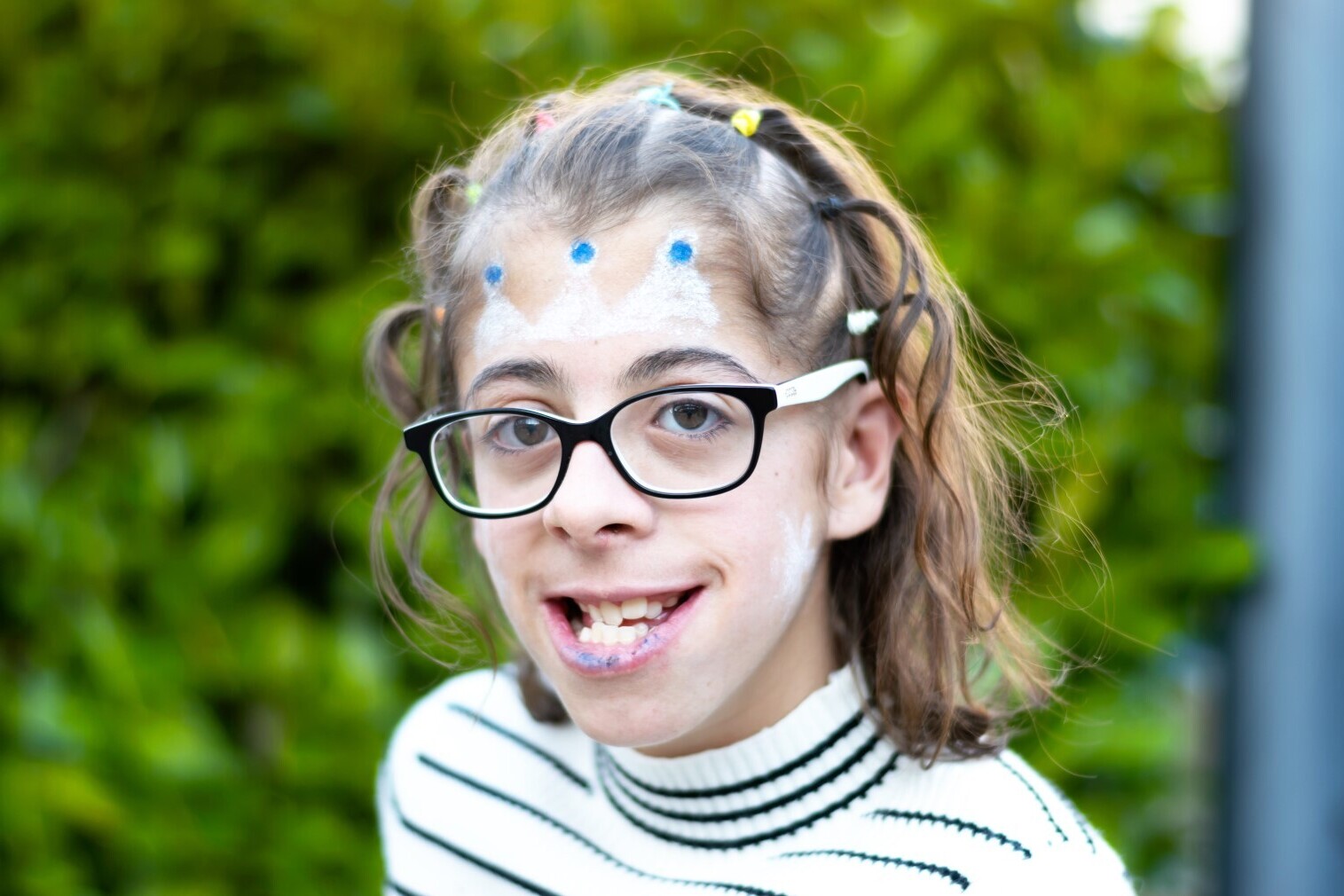
What is Nicolaides-Baraitser Syndrome? Nicolaides-Baraitser Syndrome (NCBRS) is a rare genetic disorder caused by mutations in the SMARCA2 gene. This condition affects multiple body systems, leading to a variety of physical and developmental abnormalities. Individuals with NCBRS often exhibit distinct facial features, sparse scalp hair, short stature, and unusually short fingers and toes. Intellectual disability and recurrent seizures are also common. Despite its rarity, understanding NCBRS is crucial for providing proper care and support to those affected. This article delves into 40 key facts about NCBRS, offering a comprehensive overview of its symptoms, diagnosis, and impact on individuals.
Key Takeaways:
- Nicolaides-Baraitser Syndrome (NCBRS) is a rare genetic disorder caused by mutations in the SMARCA2 gene, leading to physical and developmental abnormalities. It affects fewer than 1 in 1 million individuals worldwide.
- Individuals with NCBRS may experience symptoms such as sparse scalp hair, distinct facial features, seizures, and intellectual disability. Early diagnosis, medical care, and family support are crucial for managing the condition effectively.
What is Nicolaides-Baraitser Syndrome?
Nicolaides-Baraitser Syndrome (NCBRS) is a rare genetic disorder that affects multiple body systems. It is caused by mutations in the SMARCA2 gene, leading to a variety of physical and developmental abnormalities. Here are some key facts about this condition:
-
Definition: Nicolaides-Baraitser syndrome is a rare genetic disorder that affects multiple body systems, leading to a variety of physical and developmental abnormalities.
-
Causes: The condition is caused by de novo missense mutations in the SMARCA2 gene, which is part of the SWI/SNF chromatin remodeling complex. These mutations disrupt the normal function of this complex, leading to altered gene expression and developmental issues.
-
Frequency: NCBRS is an extremely rare condition, with fewer than 200 reported cases worldwide. It is estimated to occur in less than 1 in 1 million individuals.
Common Symptoms of NCBRS
Individuals with NCBRS exhibit a range of symptoms that can vary in severity. Here are some of the most common ones:
-
Symptoms: The most common symptoms include sparse scalp hair, small head size (microcephaly), distinct facial features, short stature, prominent finger joints, unusually short fingers and toes (brachydactyly), recurrent seizures (epilepsy), and moderate to severe intellectual disability with impaired language development.
-
Hair Characteristics: Affected individuals often have sparse scalp hair that is noticeable in infancy. The amount of hair decreases over time, but the growth rate and texture of the remaining hair are normal. In rare cases, the amount of scalp hair may increase over time. Eyebrows may become less full with age, but eyelashes typically remain normal.
-
Facial Features: Characteristic facial features include a triangular face, deep-set eyes, a thin nasal bridge, wide nostrils, a pointed nasal tip, and a thick lower lip. Many individuals have a lack of subcutaneous fat under the skin, which can cause premature wrinkling and visible veins on the skin surface.
-
Body Characteristics: People with NCBRS may have pale skin with visible veins due to the lack of subcutaneous fat. The lack of subcutaneous fat in the hands makes the finger joints appear larger than normal, and over time, the fingertips become broad and oval-shaped. A wide gap between the first and second toes (sandal gap) is also common.
Challenges Faced by Individuals with NCBRS
Living with NCBRS comes with various challenges, including medical and developmental issues. Here are some of the difficulties faced by affected individuals:
-
Epilepsy: Most individuals with NCBRS experience recurrent seizures, which often begin in infancy. The seizures can be difficult to control with medication, and affected individuals may experience multiple seizure types.
-
Intellectual Disability: Almost everyone with NCBRS has moderate to severe intellectual disability. Early developmental milestones like crawling and walking are often normally achieved, but further development is limited, and language development is severely impaired. At least one-third of affected individuals never develop speech, while others may lose their verbal communication over time.
-
Behavioral Traits: Despite their intellectual disability, many individuals with NCBRS are described as having a happy demeanor and being very friendly. However, they can exhibit moments of aggression and temper tantrums.
-
Eczema: An inflammatory skin disorder called eczema is a common symptom of NCBRS. About half of individuals with the condition have eczema, which can be challenging to manage.
-
Hernias: Approximately half of individuals with NCBRS have a soft out-pouching around the belly-button (umbilical hernia) or lower abdomen (inguinal hernia).
-
Dental Abnormalities: Some affected individuals have dental abnormalities such as widely spaced teeth, delayed eruption of teeth, and absent teeth (hypodontia).
Growth and Development Issues
NCBRS affects growth and development in various ways. Here are some of the growth-related challenges:
-
Growth Issues: Most affected individuals grow slowly, resulting in short stature and microcephaly. Sometimes, growth before birth is unusually slow.
-
Feeding Problems: Nearly half of individuals with NCBRS experience feeding problems, which can be a significant challenge for caregivers.
-
Cryptorchidism: Most affected males have undescended testes (cryptorchidism), and females may have underdeveloped breasts.
Genetic Basis and Chromatin Remodeling
Understanding the genetic basis of NCBRS is crucial for grasping how the condition develops. Here are some insights into the genetic aspects:
-
Genetic Basis: The SMARCA2 gene provides instructions for making one piece (subunit) of a group of similar protein complexes known as SWI/SNF complexes. These complexes regulate gene activity by chromatin remodeling, and mutations in SMARCA2 disrupt this process.
-
Chromatin Remodeling: Chromatin remodeling is essential for regulating gene expression during development. The SMARCA2 protein uses ATP to provide energy for this process, but mutations in SMARCA2 result in nonfunctional SWI/SNF complexes.
Diagnosis and Prognosis
Diagnosing NCBRS can be challenging due to its rarity and similarity to other genetic disorders. Here are some facts about diagnosis and prognosis:
-
Progressive Nature: The symptoms of NCBRS are progressive, meaning they worsen over time. Early diagnosis is crucial for managing the condition effectively.
-
Diagnostic Challenges: Due to its rarity and similarities to other genetic disorders, diagnosing NCBRS can be challenging. It often requires multiple workups involving various tests and medical specialties.
-
Genotype-Phenotype Correlation: The genotype-phenotype correlation of NCBRS is related to the location of the gene locus, particularly the SNF2 ATPase domain. This correlation helps in understanding the severity and progression of the condition.
-
Long-Term Prognosis: The long-term prognosis for individuals with NCBRS is guarded. They require ongoing medical care and support to manage their symptoms and improve their quality of life.
Treatment and Support
Managing NCBRS involves various treatments and support strategies. Here are some of the approaches used:
-
Epilepsy Treatment: Managing epilepsy in NCBRS can be complex. Affected individuals may require multiple medications and ongoing medical supervision to control their seizures.
-
Speech Therapy: Speech therapy is often necessary to help individuals with NCBRS develop or maintain verbal communication skills. However, many affected individuals never develop speech or lose it over time.
-
Behavioral Support: Behavioral support is crucial for managing aggression and temper tantrums in individuals with NCBRS. This may involve occupational therapy, counseling, and other interventions.
-
Nutritional Support: Nutritional support is essential for individuals with feeding problems. This may include dietary modifications, feeding tubes, or other interventions to ensure adequate nutrition.
-
Surgical Interventions: In some cases, surgical interventions may be necessary to correct hernias or other physical abnormalities associated with NCBRS.
Importance of Genetic Counseling and Research
Genetic counseling and research play a vital role in understanding and managing NCBRS. Here are some key points:
-
Genetic Counseling: Genetic counseling is important for families affected by NCBRS. It helps in understanding the risk of recurrence and provides guidance on reproductive options.
-
Research Needs: Despite its rarity, NCBRS requires further research to improve our understanding of its pathogenesis and to develop more effective treatments. This includes studies on chromatin remodeling and the role of SMARCA2 in gene expression.
-
Clinical Subtypes: NCBRS is a clinical subtype of SWI/SNF-related intellectual disability syndromes. It has a unique genotype-phenotype correlation, which is essential for diagnosis and management.
-
Phenotypic Variability: The phenotypic variability of NCBRS is significant, with some individuals exhibiting milder symptoms while others have more severe manifestations. This variability makes diagnosis challenging but also highlights the importance of detailed clinical evaluation.
Diagnostic Techniques and Long-Term Care
Advanced diagnostic techniques and long-term care are crucial for managing NCBRS effectively. Here are some important aspects:
-
Diagnostic Techniques: Perfecting multiple types of diagnostic techniques is crucial for identifying NCBRS. This includes exome sequencing, whole-genome sequencing, and other advanced genetic testing methods.
-
Clinical Features: The clinical features of NCBRS are staged and progressive. Early diagnosis is essential for initiating appropriate management strategies and improving long-term outcomes.
-
Long-Term Follow-Up: Long-term follow-up is necessary for individuals with NCBRS. This involves regular medical check-ups, monitoring of symptoms, and adjustments to treatment plans as needed.
Family and Community Support
Support from family and community resources is essential for individuals with NCBRS. Here are some ways to provide support:
-
Family Support: Family support is critical for individuals with NCBRS. This includes emotional support, practical assistance, and access to resources that can help manage the condition effectively.
-
Community Resources: Access to community resources such as support groups, educational programs, and healthcare services is vital for families affected by NCBRS. These resources can provide valuable information, emotional support, and practical assistance.
-
Advocacy Efforts: Advocacy efforts are necessary to raise awareness about NCBRS and to secure funding for research and support services. This can help in improving the lives of individuals affected by this condition.
-
Educational Programs: Educational programs for healthcare professionals, caregivers, and the general public can help in better understanding and managing NCBRS. These programs can provide information on diagnosis, treatment options, and support services available.
-
Ethical Considerations: Ethical considerations are important in the management of NCBRS. This includes respecting the autonomy of individuals with the condition, ensuring informed consent, and addressing any ethical dilemmas that may arise during diagnosis and treatment.
-
Future Directions: Future directions in the management of NCBRS include developing more effective treatments for epilepsy and intellectual disability, improving diagnostic techniques, and enhancing support services for affected individuals and their families. Additionally, there is a need for more research into the pathogenesis of NCBRS to better understand its underlying mechanisms and to develop targeted therapies.
Final Thoughts on Nicolaides-Baraitser Syndrome
Nicolaides-Baraitser Syndrome (NCBRS) is a rare genetic disorder with a wide range of physical and developmental challenges. Caused by mutations in the SMARCA2 gene, it affects fewer than 200 individuals worldwide. Symptoms include sparse scalp hair, distinct facial features, short stature, epilepsy, and intellectual disability. Managing NCBRS requires a comprehensive approach involving medical care, speech therapy, behavioral support, and nutritional assistance. Early diagnosis and ongoing research are crucial for improving the quality of life for those affected. Families benefit from genetic counseling and community resources to navigate the complexities of this condition. By understanding NCBRS better, we can offer more effective treatments and support, making a significant difference in the lives of those impacted.
Frequently Asked Questions
Was this page helpful?
Our commitment to delivering trustworthy and engaging content is at the heart of what we do. Each fact on our site is contributed by real users like you, bringing a wealth of diverse insights and information. To ensure the highest standards of accuracy and reliability, our dedicated editors meticulously review each submission. This process guarantees that the facts we share are not only fascinating but also credible. Trust in our commitment to quality and authenticity as you explore and learn with us.


